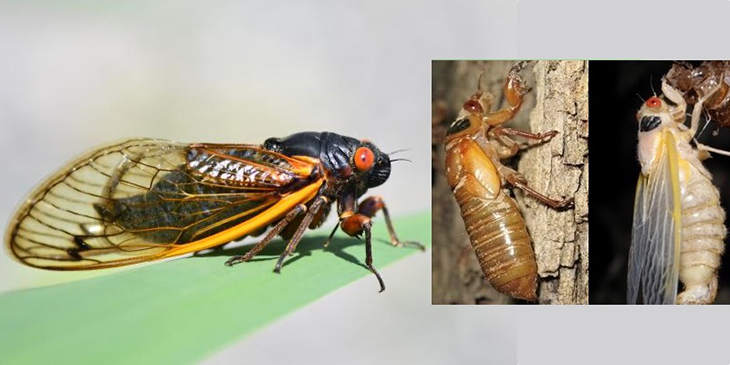
The rare convergence of two cicada broods, Brood 13 and Brood 19, promises to create a spectacular natural spectacle that will reverberate throughout the Midwest with their resounding chirps. This phenomenon, where millions upon millions of cicadas emerge simultaneously, is a captivating event in the insect world, and we, as Americans, have a front-row seat to witness it unfold. However, such a synchronized emergence of cicadas is exceedingly rare, and the last time it occurred was in 1803 during the days of Thomas Jefferson.
Contrary to common belief, cicadas don’t hatch in this overwhelming fashion. Instead, they spend the majority of their lives living underground, only to surface en masse for a frenzied period of breeding and egg-laying. This spring, as Brood 13 and Brood 19 emerge in unison, experts estimate that the combined population of these two broods will surpass an astonishing one trillion individuals. To put this staggering number into perspective, it’s enough to stretch from the Earth to the moon and back, with cicadas lined up head-to-tail 33 times over.
The overlap of these two broods will be particularly pronounced in states like Iowa and Illinois, while Brood 19, despite its misleading name, will extend its reach into several other states such as Arkansas, Mississippi, Alabama, Georgia, Kentucky, Tennessee, North Carolina, South Carolina, and Virginia, with a few outliers even appearing in Louisiana.
This extraordinary event is a testament to the remarkable resilience and adaptability of cicadas. Yet, for those who miss this once-in-a-generation occurrence, they will have to wait until the year 2245 for the next convergence of Brood 13 and Brood 19, making this spring’s event truly a sight to behold for generations to come.
“It’s pretty much this big spectacular macabre Mardi Gras,” Jonathan Larson, an entomologist at the University of Kentucky, said when he spoke to NPR. “It’s a lot of singing, lots of paramours pairing up and then lots of dying.”
Smithsonian Magazine offers a fascinating insight into the cacophony generated by the mating rituals of the cicadas, revealing that the collective decibel level during their mating season can rival the noise produced by a passing motorcycle or chainsaw near your residence.
Scheduled to emerge this spring and conclude their life cycle in July, these cicadas pose no threat to humans, refraining from stinging, biting, envenoming, or transmitting diseases. Their emergence serves a vital ecological role, as they aerate woodland soils during their brief existence. Furthermore, their bodies become a veritable feast for wildlife, attracting a diverse range of creatures. Surprisingly, even herbivorous animals like deer enthusiastically indulge in these delectable morsels provided by the cicadas.
What are your thoughts? Please comment below and share this news!
True Activist / Report a typo


